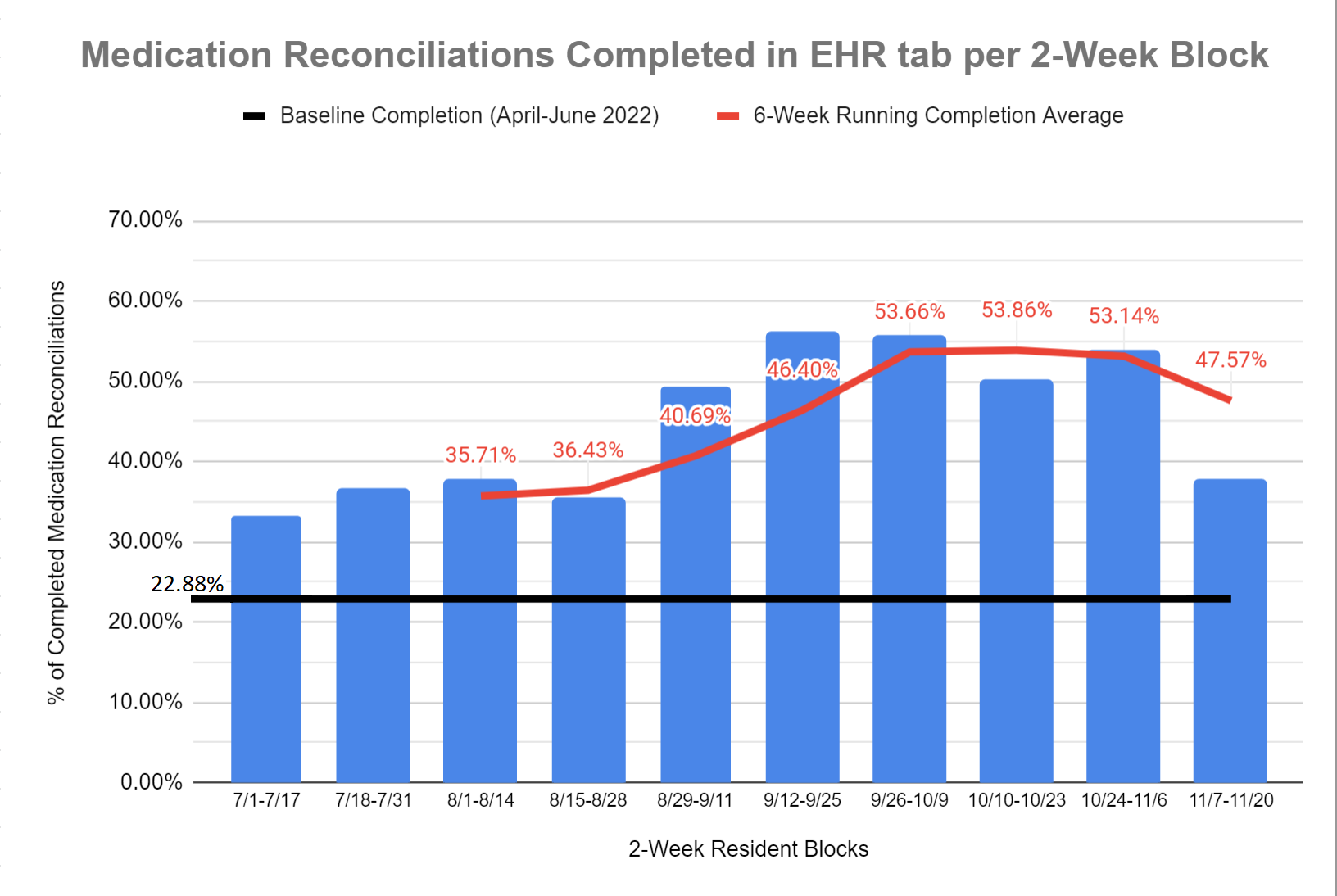Background: Medication reconciliation (MR) is foundational to patient safety during and after a hospital admission. Although many electronic health records (EHRs) have a dedicated space for documenting home medications on admission, use of such EHR sections remains variable. Providers may opt to record the MR only in the admission H&P, which is not easily updated and may not contain information learned later during the hospitalization. At our quaternary, academic urban center, inconsistent use of dedicated fields also leads to redundant work, as MR is sometimes performed multiple times due to low confidence in information stored in the EHR. We found a specific opportunity for improved EHR tab use for our general medicine teaching services (GMTS).
Purpose: We performed a multifaceted project to 1) describe resident physician workflow for storing MR information, 2) design a quality improvement (QI) innovation of electronic educational modules and gamification to promote the use of the dedicated MR EHR tab, and 3) measure the difference in MR tab use pre- and post- intervention, with the overall goal of streamlining provider work and improving transitions of care for medical inpatients.
Description: A pre-intervention survey was distributed to all internal medicine residents in April 2022. 50 of 153 residents responded (33%). Of the respondents, 25 (50%) reported recording MR in the H&P, but not in the dedicated EHR tab. 15 (30%) placed the information in both the H&P and in the EHR tab, and 10 (20%) reported using the EHR tab only. In the 3 months prior to the intervention, the EHR tab was used for 22.9% of patients admitted to the GMTS.A QI intervention was conducted from July-November 2022 to increase the number of MR completed in the EHR tab. An online guide showing the workflow was distributed to residents every two weeks. Percent of MR completed in the EHR was tracked electronically, and information was made available to teams in the form of a game called “Click for Cookies.” Every two weeks the team with the highest percentage of MR completed in the EHR tab was recognized publicly and awarded cookies. The percent of patients for whom the MR was completed in the EHR tab on the GMTS rose to 51.1% over the last 3 months of the QI intervention (September-November 2022). Safety data was obtained through analyzing data from our health system’s post-discharge call center, which conducts calls to discharged patients. Baseline data for the Medicine service from June 2022 demonstrated the call center making 2 referrals to pharmacy for post-discharge issues and 13 medication interventions. Following QI implementation, there were 0 escalations to pharmacy and an average of 11 medication interventions per month.
Conclusions: MR are variably recorded in the EHR. This project successfully leveraged electronic learning to improve IM resident workflow through an education guide and biweekly positive gamification. Preliminary safety data demonstrates a decrease in the post-discharge medication events.

